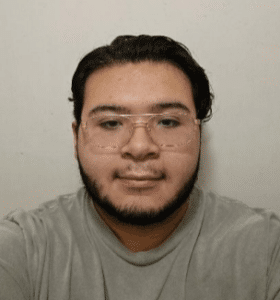 Gabriel Reyna Garcia, a former Upward Bound participant and SAU engineering major, attended the IDeA Network of Biomedical Research Excellence (INBRE) Conference where he presented on determining the refractive index of 2D ferroelectric material. Here’s what he had to say about his experience:
Gabriel Reyna Garcia, a former Upward Bound participant and SAU engineering major, attended the IDeA Network of Biomedical Research Excellence (INBRE) Conference where he presented on determining the refractive index of 2D ferroelectric material. Here’s what he had to say about his experience:
“This past summer I got an amazing opportunity as an undergraduate researcher (REU) at the University of Arkansas, Fayetteville. While I was there, I got to learn different techniques on conducting research which included safety while conducting experiments, how to record and analyze data properly, as well as how to present this data. I got to work in the Nano-Physics department with Dr. Nakamura and a graduate student, Sudeep Puri. I got to grow Tin Sulfide (SnS) nanoparticles through a process called physical vapor deposition (PVD) and found the 2D properties of this material. I accomplished this by shining different wavelengths of light onto the test subject and getting monochrome microscope images of the material. After I got the images, I found the contrast between the substrate, which was composed of Silicon Dioxide (SiO₂), and the island grown, SnS. I found the contrast by using the intensity of the island against the intensity of the substrate. This contrast was analyzed using two separate codes through MATLAB, a coding app for research.”
“After this was done and I got the contrast points, I plotted these points against the corresponding wavelength that they were gathered from. From there, the line of best fit would represent the refractive index of this material. The purpose for finding the refractive index of Tin Sulfide is crucial to understanding how it acts as light is transmitted onto it. This allows for the material to be used to understand physics phenomena such as birefringence, nonlinear susceptibility, group velocity dispersion, etc.”
“The overall goal with the different experiments and research being done at the Nano-Physics facility is to create a supercomputer that can compete with a quantum computer. Currently, a quantum computer is the fastest machine that people have created; however, it needs to be cooled to almost 0 Kelvin, which is nearly impossible and extremely expensive. However, if a supercomputer can be built and can do the same calculations at near the same speed, it would resolve much of the expenses and material used for maintaining a quantum computer. The specific compound that I grew is believed to be the most optimum compound for creating the storage aspect of this supercomputer.”
“As this research is revolutionary in both the Physics area and for the University of Arkansas, I have been invited to speak at the FiO/LS Symposium in Denver, CO, and the INBRE conference in Fayetteville, AR. I am beyond blessed to have had this opportunity, and it could not have been possible without the continuous support of God, my family and friends, and of course the Upward Bound program. The Upward Bound program and its wonderful staff have helped me achieve my dreams from high school up to now, even as I prepare to go to graduate school for my PhD in Physics.”
